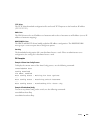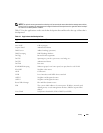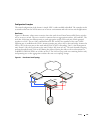
168 Utility
Nonstop Forwarding on a Switch Stack
Networking devices, such as the PowerConnect 6200 Series switches, are often described in terms of
three semi-independent functions called the forwarding plane, the control plane, and the management
plane. The forwarding plane forwards data packets and is implemented in hardware. The control plane is
the set of protocols that determine how the forwarding plane should forward packets, deciding which
data packets are allowed to be forwarded and where they should go. Application software on the
management unit acts as the control plane. The management plane is application software running on
the management unit that provides interfaces allowing a network administrator to configure the device.
The Nonstop Forwarding (NSF) feature allows the forwarding plane of stack units to continue to forward
packets while the control and management planes restart as a result of a power failure, hardware failure,
or software fault on the stack management unit. This type of operation is called nonstop forwarding.
When the management unit fails, only the switch ASICs on the management unit need to be restarted.
To prevent adjacent networking devices from rerouting traffic around the restarting device, the NSF
feature uses the following three techniques:
1
A protocol can distribute a part of its control plane to stack units so that the protocol can give the
appearance that it is still functional during the restart.
2
A protocol may enlist the cooperation of its neighbors through a technique known as graceful restart.
3
A protocol may simply restart after the failover if neighbors react slowly enough that they will not
normally detect the outage.
Initiating a Failover
The NSF feature allows you to initiate a failover, which results in a warm restart of the master unit in the
stack. Initiating a failover reloads the management unit, triggering the backup unit to take over. Before
the failover, the management unit pushes application data and other important information to the
backup unit. Although the handoff is controlled and causes minimal network disruption, some
application state is lost, such as pending timers and other pending internal events.
Checkpointing
Switch applications (features) that build up a list of data such as neighbors or clients can significantly
improve their restart behavior by remembering this data across a warm restart. This data can either be
stored persistently, as DHCP server and DHCP snooping store their bindings database, or the
management unit can checkpoint this data directly to the backup unit. Persistent storage allows an
application on a standalone unit to retain its data across a restart, but since the amount of storage is
limited, persistent storage is not always practical.
The NSF checkpoint service allows the management unit to communicate certain data to the backup
unit in the stack. When the stack selects a backup unit, the checkpoint service notifies applications to
start a complete checkpoint. After the initial checkpoint is done, applications checkpoint changes to
their data.


















